5月15日雅思阅读考试真题答案 2023年雅思阅读考试精选习题及答案(3)很多朋友对这方面很关心,大学路整理了相关文章,供大家参考,一起来看一下吧!
本文目录一览:

2021年5月15日雅思阅读考试真题答案
想要顺利的通过雅思考试,了解雅思的考试真题是非常有必要的,对于在阅读部分有困难的同学,可以去做一下考试的真题,分享了2021年5月15日雅思阅读考试真题答案。
2021年5月15日雅思阅读考试真题答案
Passage1:噪音
难易度:难
题型:填空+匹配+单选
1. 85 dBa
2. hearing (impairment)
3. high-frequency
4. stomach (contractions)
5. noise map
6. B
7. D
8. C
9. E
10. A
11. C
12. D
13. C
Passage2:复活灭绝动物
难易度:难
题型:段落匹配+填空+人名匹配
待回忆
Passage3:电视
难易度:一般
题型:段落匹配+单选+人名匹配
28-32 段落匹配
28.ii
29.vi
30.vii
31.i
32.v
33-35 单选
33.A
34.D
35.C
36-40 人名匹配
36.D
37.E
38.A
39.C
40.F
影响阅读拿分的因素
1.词汇
第一个影响雅思阅读分数的因素就是词汇。必须在阅读文章中记忆,每篇文章做完题目,要整理一下单词,然后再运用到阅读其他文章中去,这叫从阅读中来,会阅读中去。效果比较明显。不要盲目地扩充大量单词,要有针对性,针对雅思阅读,要知道雅思阅读常考那些词。这可从广泛接触雅思阅读文章中,对单词有感觉。
2.语法
第二个是语法。阅读中很多题目是在考查语法,都是暗地里考。特别是主观题,还有题目与原文的一些改写,都是建立在语法的基础上的。我们要注意一些关系,比如说对比对照关系,因果关系,因为两事物一旦有了关系,就热闹了,就比较好出题了。
3.逻辑关系
第三个是逻辑关系。雅思有个别难题不光是考查大家的英文水平,同时还在考查大家的逻辑思维能力。有些题目就是在这个环节出了问题,全部单词都认识,就是题做不对。这样的题多是判断题和单选题。
4.文章的背景
第四个是文章的背景。这是影响雅思阅读分数最不明显的因素。雅思阅读文章的背景我们也要熟悉,比如交通能源污染,这是雅思考试永恒的话题。我们必须积累这方面的常识,背景。另外还有建筑,动植物,医疗健康,公司管理,高科技等等。
5.题目的类型
第五个是雅思阅读题目的类型。其实这是影响雅思阅读分数的最明显的因素。十多种题目类型可以进行以下划分,实力题与技巧题,必考题与选考题,主观题与客观题。这样的话,考生就比较容易把握题目类型了,而且可以根据自己的实际水平,调整做题的先后顺序。比如说,一个实力稍微弱点的学生,就要先去找填图填表,匹配,简答这类的题目做。而像判断题能做就做,如果有的连题干都看不懂,那只能根据一般规律去做,也就是蒙。这是没有办法的办法。但总比你在那浪费上十多分钟强,但也不能空着。
雅思阅读题型介绍
多重选择题型 (maltiple-choice tasks);
IELTS阅读测试中多重选择题型与toefl测试中的多重选择题型虽然类似,但实质上差别很大。ielt阅读测试中的多重选择题型更多侧重于对文章的理解,而非强调语法、词法的运用。
完成句子题型 (sentence completion tasks);
这种题目比较花时间,需要考生根据选项在文章仔细的寻找相关的信息,这也是考察考生筛选信息和提取信息的能力。题目会给出句子的一部分内容,没有给出的部分便要求考生在文章中去找,或者给你选项让你选一个。
摘要(summary)、填空题型 (gapfill);
填空题通常有两种形式:一种是根据文章内容选择词或短语填空,一般是为阅读文章的缩写内容进行填空;另一种则无参考文章,只是一篇短文。第1种题型相对第二种题型较难,所花费时间较多,因为要将两篇文章进行语句、词语的比较。不过这种缩写形式对于理解所给阅读文章有所帮助。第二种形式是利用所给单词或短语进行填空。
配对题(matching);
这种题型也是考察考生的信息筛选能力。这种题型较为普遍,配对的范围主要包括新产品的发明家、发明时间,事件和事件的发展经过,事件发生的原因和结果,文章内容中概念的解释和标志性事物及其所处的年代等等。
完成图表、示意图题型(table、chart or diagram completion);
这种题目便是要求考生将图标的信息补全。在雅思阅读中,会出现很多的图表和示意图,这些图表中的文字内容不多,但是问题的答案都包含在图表之中,需要考生自己去填补。
回答问题(short-answer question tasks);
回答问题是根据所给文章或图表回答问题。这种题目是考察考生对信息的筛选和提取能力,比如在IELTS阅读测试中通常是用下列单词提问:. what、which、when、where、who、whose、whom、why、 how 等。除了利用上述单词进行提问外,有时会在答题指引中将所提问题列出。
辨别正误题型(True / false /not given);
该题型还涉及到:(not given / not mentioned)没有提到,有时还会出现下列提法accurat / inaccurat 准确/不准确;supported / contradicted 一致/不一致。correct / incorrect 正确与不正确。辨别正误题型属于难度较大的题型。通常在阅读测试中的第三或 第四部分出现。
paragraph headings(段落标题)较频繁的题型之一;
一般来说有10个左右的标题选项会给出在阅读文章的后面,其中会包含一到两个段落和其标题的例子。这种题目要求考生对给出的段落在文章内容中找出与其相匹配的段落标题,虽然题目给出的标题会应用于多个段落,但是在正式的考试中,一个选项只能适用于一个段落。
2023年11月20日雅思阅读考试真题及答案
您好,我是专注留学考试规划和留学咨询的小钟老师。在追寻留学梦想的路上,选择合适的学校和专业,准备相关考试,都可能让人感到迷茫和困扰。作为一名有经验的留学顾问,我在此为您提供全方位的专业咨询和指导。欢迎随时提问!
雅思的阅读考试,在11月20日的考试中,有了新的变化,来一起看看真题吧。下面是小钟老师整理的2023年11月20日雅思阅读考试真题及答案。
2023年11月20日雅思阅读考试真题
Passage 1
主题:世界上最古老的鞋
参考答案:
Passage 2
主题:捕捉小行星
参考答案:
Passage 3
主题:语言的变化
参考答案:
27-30 填空27.sound laws28.fashion29.imperfect30.principle of ease
31-37 判断31.F32.NG33.NG34.T35.T36.NG37.T
38-40 匹配38.C39.B40.A
雅思阅读评分标准
是直接将答对题目数量划分给对应分数,从9分到0分。其中a类标准稍严于g类,二者是不完全一样的,请注意。具体看下表:
雅思阅读考试类型
雅思A类阅读(学术类)部分共有三篇文章,考生需要回答40道题目。每一篇文章所需要回答的问题数量并不相同。每一道问题相对应一个分数。文章内容和题目均出现于试卷中。
文章介绍
阅读考试中所出现的文章是由真实的文章改写而成的。这些文章来源于诸如杂志、期刊、书籍和报纸等途径,与考生未来在大学课程中将阅读到的文章极为相似。文 章还包括了非文字性的内容,比如图表、曲线图、以及画图等。文章的写作方式多样,比如记叙文、说明文或者议论文等文体。文章的内容包含即将学习本科、研究 生课程或进行职业注册的考生所感兴趣的、与其认知程度相符的常见话题。其中,至少一篇文章会出现详尽的论述形式。所有文章总计长度约在2000到2750 字之间。
雅思G类阅读(培训类)共有三部分,文章难度由浅至深,考生需要回答40道题目。第一部分有14道题,第二和第三部分分别有13道题。
第一部分通常包含2到3篇短文或者若干段文字(如广告等)。第二部分通常有2篇文章,第三部分则为一段较长的文章。文章的内容和文体各有不同,难度最深的为第三部分的内容。
第一部分的内容选自通知、广告、时间表、宣传品、以及其它类似的内容。第二部分的内容选自大学招生简章、课程介绍、大学课程介绍、图书馆指引、规定、以及 其它类似的内容。第三部分的内容选自报纸、杂志、期刊、小说或非虚构的书籍、以及其它类似的内容。所有文章总计长度约在2400字左右。
雅思G类阅读考试评分标准
按照IELTS评分标准,考生每科成绩从1~9共分为九个等级。考生的总分取听、说、读、写四个部分得分之和的平均值,平均值也需按照四舍五入的原则统计,并最终确定考生的雅思总分。今天,新通教育安徽外语专家就和大家来聊聊雅思G类阅读评分标准是什么?希望能解答于雅思考生对于雅思G类阅读评分标准的疑惑。
听力、阅读、写作、总分都有半分的情况存在,最后得分均为取四项成绩的平均值,如果遇到四项平均值为x.25或者x.75时怎么计算?
遇到这种情况还是按照四舍五入的原则计算,但需要尾数大于0.5分才计入上一级分数,尾数小于或者等于0.5则计入同一级分数。例如四项平均分等于或大于5.25分,则计入5的同一级分数,取5.5分;如果平均分等于或大于5.75分,则计入5的上一级分数,取6分。
雅思G类阅读得分与原始分数换算表
听力和阅读都分别有40道题目,每答对一题得一分。最后的分数(原始分 Raw Score)被折算成1-9分的雅思段位。
由于和A类阅读考试相比,雅思G类阅读的题目较简单,所以取得高分相应的需要多对2-3题。由于雅思阅读考试都是相对比较客观的题目,所以不存在雅思阅读成绩复议这个程序。大家在备考雅思阅读考试的时候,可以根据上面的雅思G类阅读评分标准对自己的阅读进行测试。
考试时间为60分钟 共3篇文章 每篇约1000左右(阅读量极大) 40个题目
在考试内容上A类和G类是有一定的差别的:
Academic类与General training类的考题都以"三大段"的文章为基本结构,大约1500-3000字之间,内容多样,甚至有时以图表、表格的方式出现,学生答题的方式亦有多种答题形式,共40题.
阅读部分的主题并不是为了考察学生对学术的专业度或认知度,所以学生千万别因对主题的陌生而紧张起来。
A类与G类内容相同之处在于A类除生活化范畴之外,加入考生在学业上、学术上的探讨与了解,而G类较着重于社会上的、生活化的、工作训练等的主题。
希望以上的答复能对您的留学申请有所帮助。如果您有任何更详细的问题或需要进一步的协助,我强烈推荐您访问我们的留学官方网站
,在那里您可以找到更多专业的留学考试规划和留学资料以及*的咨询服务。祝您留学申请顺利!
2023年雅思阅读考试精选习题及答案(3)
您好,我是专注留学考试规划和留学咨询的小钟老师。在追寻留学梦想的路上,选择合适的学校和专业,准备相关考试,都可能让人感到迷茫和困扰。作为一名有经验的留学顾问,我在此为您提供全方位的专业咨询和指导。欢迎随时提问!
小钟老师为大家带来2023年雅思阅读考试精选习题及答案(3),欢迎大家参考!更多相关内容请关注本站!
2023年雅思阅读考试精选习题及答案(3)
Talc Powder
A Peter Brigg discovers how talc from Luzenac's Trimouns in France find its way into food and agricultural products - from chewing gum to olive oil. High in the French Pyrenees, some 1,700m above sea level, lies Trimouns, a huge deposit of hydrated magnesium silicate - talc to you and me. Talc from Trimouns, and from ten other Luzenac mines across the globe, is used in the manufacture of a vast array of everyday products extending from paper, paint and plaster to co*etics, plastics and car tyres. And of course there is always talc's best known end use: talcum powder for babies1 bottoms. But the true versatility of this remarkable mineral is nowhere better displayed than in its sometimes surprising use in certain niche markets in the food and agriculture industries.
B Take, for example, the chewing gum business. Every year, Talc de Luzenac France - which owns and operates the Trimouns mine and is a member of the international Luzenac Group (art of Rio Tinto minerals) supplies about 6,000 tones of talc to chewing gum manufacturers in Europe. "We've been selling to this sector of the market since the 1960s," says Laurent Fournier, sales manager in Luzenac's Specialties business unit in Toulouse. "Admittedly, in terms of our total annual sales of talc, the amount we supply to chewing gum manufacturers is relatively *all, but we see it as a valuable niche market: one where customers place a premium on securing supplies from a reliable, high quality source. Because of this, long term allegiance to a proven suppler is very much a feature of this sector of die talc market." Switching sources - in the way that you might choose to buy, say, paperclips from Supplier A rather than from Supplier B - is not an easy option for chewing gum manufacturers." Fournier says. "The cost of reformulating is high, so when customers are using a talc grade that works, even if it's expensive, they are understandably reluctant to switch."
C But how is talc actually used in the manufacture of chewing gum? Patrick Delord, an engineer with a degree in agronomics, who has been with Luzenac for 22 years and is now senior market development manager, Agriculture and Food, in Europe, explains that chewing gums has four main components. "The most important of them is the gum base," he says. "It's the gum base that puts the chew into chewing gum. It binds all the ingredients together, creating a soft, *ooth texture. To this the manufacturer then adds sweeteners, softeners and flavourings. Our talc is used as a filler in the gum base. The amount vanes between, say, ten and 35 per cent, depending on the type of gum. Fruit flavoured chewing gum, for example, is slightly acidic and would react with the calcium carbonate that the manufacturer might otherwise use as a filler. Talc, on the other hand, makes an ideal filler because it's non-reactive chemically. In the factory, talc is also used to dust the gum base pellets and to stop the chewing gum sticking during the lamination and packing process," Delord adds.
D The chewing gum business is, however, just one example of talc's use in the food sector. For the past 20 years or so, olive oil processors in Spain have been taking advantage of talc's unique characteristics to help them boost the amount of oil they extract from crushed olives According to Patrick Delord, talc is especially useful for treating what he calls "difficult" olives. After the olives are harvested - preferably early in the morning because their taste is better if they are gathered in the cool of the day they are taken to the processing plant. There they arc crushed and then stirred for 30-45 minutes. In the old days, the resulting paste was passed through an olive press but nowadays it's more common to add water and (K-6IH) the mixture to separate the water and oil from the solid matter The oil and water are then allowed to settle so that the olive oil layer can be )and bottled. “Difficult” olives are those that are more reluctant than the norm to yield up their full oil content. This may be attributable to the particular species of olive, or to its water content and the time of year the olives arc collected - at the beginning and the end of the season their water content is often either too high or too low. These olives are easy to recognize because they produce a lot of extra foam during the stirring process, a consequence of an excess of a fine solid that acts as a natural emulsifier. The oil in this emulsion is lost when the water is disposed of. Not only that, if the waste water is disposed of directly into local fields - often the case in many *aller processing operations - the emulsified oil may take some time to biodegrade and so be harmful to the environment.
E "If you add between a half and two percent of talc by weight during the stirring process, it absorbs the natural emulsifier in the olives and so boosts the amount of oil you can extract," says Delord. "In addition, talc's flat, 'platey' structure helps increase the size of the oil droplets liberated during stirring, which again improves the yield. However, because talc is chemically inert, it doesn't affect the color, taste, appearance or composition of the resulting olive oil."
F If the use of talc in olive oil processing and in chewing gum is long established, new applications in the food and agriculture industries arc also constantly being sought by Luzenac. One such promising new market is fruit crop protection, being pioneered in the US. Just like people, fruit can get sunburned. In fact, in very sunny regions up to 45 per cent of a typical crop can be affected by heat stress and sunburn However, in the case of fruit, it's not so much the ultra violet rays which harm the crop as the high surface temperature that the sun's rays create.
G To combat this, farmers normally use either chemicals or spray a continuous fine canopy of mist above the fruit frees or bushes. The trouble is, this uses a lot of water - normally a precious commodity in hot, sunny areas - and it is therefore expensive. What's more, the ground can quickly become waterlogged. "So our idea was to coat the fruit with talc to protect it from the sun," says Greg Hunter, a marketing specialist who has been with Luzenac for ten years. "But to do this, several technical challenges had first to be overcome. Talc is very hydrophobic: it doesn't like water. So in order to have a viable product we needed a wettable powder - something that would go readily into suspension so that it could be sprayed onto the fruit. It also had to break the surface tension of the cutin (the natural waxy, waterproof layer on the fruit) and of course it had to wash off easily when the fruit was harvested. No-one's going to want an apple that's covered in talc."
H Initial trials in the state of Washington in 2023 showed that when the product was sprayed onto Granny Smith apples, it reduced their surface temperature and lowered the incidence of sunburn by up to 60 per cent. Today the new product, known as Invelop Maximum SPF, is in its second commercial year on the US market. Apple growers are the primary target although Hunter believes grape growers represent another sector with long term potential. He is also hopeful of extending sales to overseas markets such as Australia, South America and southern Europe.
希望以上的答复能对您的留学申请有所帮助。如果您有任何更详细的问题或需要进一步的协助,我强烈推荐您访问我们的留学官方网站
,在那里您可以找到更多专业的留学考试规划和留学资料以及*的咨询服务。祝您留学申请顺利!
以上就是大学路为大家带来的5月15日雅思阅读考试真题答案 2023年雅思阅读考试精选习题及答案(3),希望能帮助到大家!

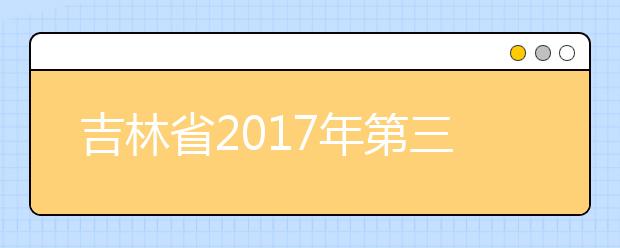 吉林省2017年第三批高考招生征集志愿(第二轮)填报8月15日8:00时正式开始!
吉林省2017年第三批高考招生征集志愿(第二轮)填报8月15日8:00时正式开始!
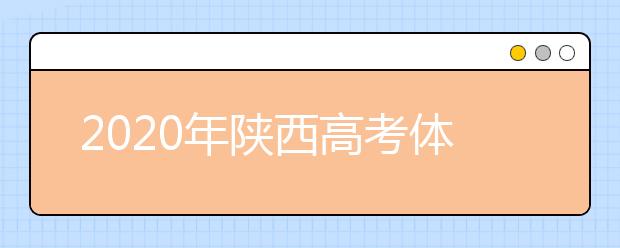 2020年陕西高考体检时间:3月15日
2020年陕西高考体检时间:3月15日
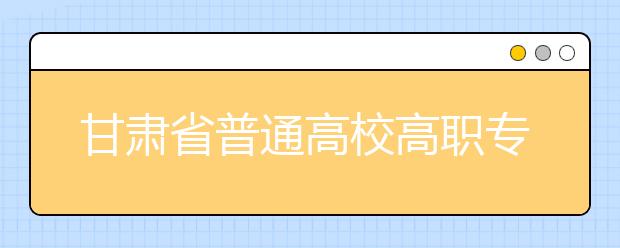 甘肃省志愿填报说明会8月15日在兰州西北中学启幕
甘肃省志愿填报说明会8月15日在兰州西北中学启幕
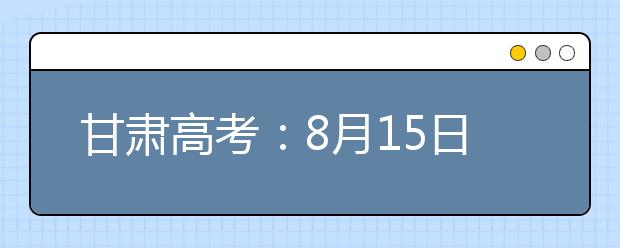 甘肃高考:8月15日20时起本科提前批专项计划征集志愿
甘肃高考:8月15日20时起本科提前批专项计划征集志愿
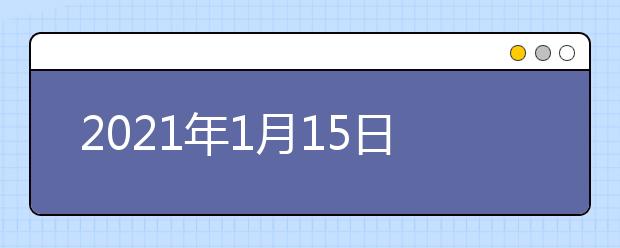 2021年1月15日广东体育类艺考生开始考试了
2021年1月15日广东体育类艺考生开始考试了
 2020年北京10月自学考试成绩查询时间:12月15日
2020年北京10月自学考试成绩查询时间:12月15日
 天津2020年普通高考报名将于11月15日开始
天津2020年普通高考报名将于11月15日开始
 2020年天津普通高考报名将于11月15日开始
2020年天津普通高考报名将于11月15日开始
 深圳北理莫斯科大学:2019年综合评价本科计划招生180人 5月15日报名截止
深圳北理莫斯科大学:2019年综合评价本科计划招生180人 5月15日报名截止
 中学校长向北大申请学生资质截止10月15日
中学校长向北大申请学生资质截止10月15日









